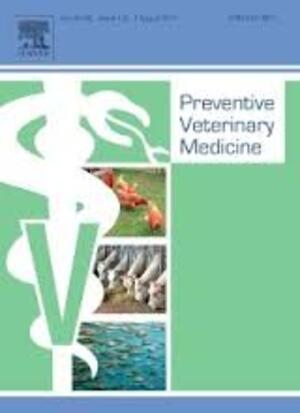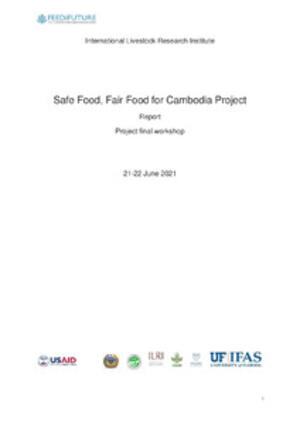
Rift Valley fever virus seroprevalence among ruminants and humans in northeast Kenya
Abstract
Rift Valley fever (RVF) is a zoonotic vector-borne disease present in much of Africa,
and the Arabic peninsula. During outbreaks, the case fatality is high in young
ruminants and there may be abortion storms, human disease is usually mild but
some may suffer fatal hemorrhagic fever. Outbreaks in East Africa occur after periods
of heavy prolonged rains, such as during El Niño southern oscillations, which lead to
a sudden increase in the number of vectors hatched. Between outbreaks, there are
indications that the virus is still circulating in some ecologies.
Kenya has suffered repeated serious outbreaks of RVF, with high morbidity in
humans and animals, and also severe economic consequences. In the northern of
Kenya, a hot spot for RVF outbreaks, there are continuous expansions of irrigation
schemes, which enable the societies to be less susceptible to droughts. However,
there are concerns that the increased irrigation would provide more vector breeding
grounds, and thus cause people living close to be more exposed to vector-borne
diseases. In this study, 1117 serum samples were collected from humans in the age
5-90 years old, in the irrigated area, a riverine area, and the close-by district where
people are fully depending on pastoralism. Samples were tested with a competitive
ELISA detecting both IgM and IgG antibodies.
Overall seroprevalence was 21.9%, and univarible analyses could find no difference
between the three areas, but men were found to be significantly more seropositive
than women (26.2 and 18.8% respectively, p=0.004).
Ruminants (sheep, goats, and cattle) were also sampled within the irrigation. A total
of 1997 animals were sampled, and tested with the same ELISA as the human
samples. Overall seroprevalence was 25.6%, with no difference between the
seroprevalences in goats, sheep and cattle. Juveniles had lower seroprevalence
rates than adults, 12.3% compared to 30.2% (p<0.001). Since the last outbreak
occurred in 2006-2007, juveniles could not have been infected during that outbreak.
In conclusion, the study confirms that RVF can be circulating in ruminants between
epidemics in irrigation schemes. However, the human sampling did not show any
evidence that living in irrigation schemes would make people more exposed,
although the exposure detected here is cumulative and longitudinal surveys may be
more suitable to detect differences in infection rates.
Citation
Lindahl, J., Njeru, I., Karanja, J., Grace, D. and Bett, B. 2016. Rift Valley fever virus seroprevalence among ruminants and humans in northeast Kenya. Presentation at the first joint conference of the Association of Institutions for Tropical Veterinary Medicine and the Society of Tropical Veterinary Medicine, Berlin, Germany, 4–8 September 2016. Nairobi, Kenya: ILRI.










